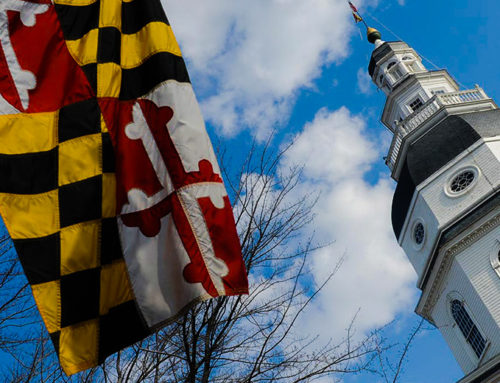View by Topic
Recent Articles
-
Appeals Court Finds Climate Change is Not JusticiableSaturday, May 11th, 2024
-
Colorado Building Energy Performance Standards (BEPS) Laws ChallengedSaturday, May 4th, 2024
-
New Environmental Laws from the 2024 Maryland Legislative SessionSaturday, April 27th, 2024
-
EPA Designates PFOA and PFOS as Hazardous Substances under Superfund LawSaturday, April 20th, 2024
-
Federal Government Finalizes New Efficiency Standards for LightbulbsSaturday, April 13th, 2024
View by Month/Year
“Green Building Law Update” Headlines
Recent Articles & News from
Stuart Kaplow’s blog
at GreenBuildingLawUpdate.com
- Constitutional Rights vs. Climate Change: Inside the Juliana Case Dismissal May 12, 2024
- Does Federal EPCA Trump Colorado Building Energy Performance Standards (BEPS)? May 5, 2024
- New Environmental Laws in Maryland: 2024 Brings Opportunities for Businesses April 28, 2024
- EPA Takes Action: PFOA and PFOS Now Hazardous Substances Under Superfund Law April 21, 2024
Subscribe to the Green Building Law Update!
Stuart Kaplow brings his expertise and extensive experience to the table with his unique digital publication, "Green Building Law Update". Subscribers receive regular updates to keep them informed about important issues surrounding Environmental Law, Green Building & Real Estate Law, as well as the emerging demand for Environmental Social Governance (ESG).
Get fresh content through the lense of Stuart Kaplow's cutting-edge expertise, innovative commentary and insider perspective. Don't miss another issue! Subscribe below.
Baltimore County Poised To Create New RC 6 and RC 7 Zones
Baltimore County is expected to enact legislation next month creating two new resource preservation zoning districts.
RC 7 Zone
The proposed RC 7 zone is intended to protect “valuable cultural, historic, recreational, and environmental resources” through significantly lowering residential densities and reducing the scale of non-residential building. It can be anticipated that many properties currently zoned RC 4 and RC 5 will be downzoned to this new RC 7 zone, in October, 2000, as part of the 2000 comprehensive zoning map process. Moreover, it is likley the bill will be made retroactive to January, 2000, thereby subjecting all pending development on properties rezoned to RC 7, to the new regulations.
Residential density in the new zone would be limited to 0.04 lots per acre or an average of one lot per twenty five acres. Certain limited other uses, including antique shops and bed and breakfasts, are permitted by special exception upon an additional finding by the Zoning Commissioner that the use is not detrimental to agricultural uses nor detrimental to natural resources on the site. Other than small scale non-residential building will only be permitted through a planned unit development (PUD) process that requires Planning Board approval in addition to the usual Hearing Officer approval. In response to lobbying by the religious community, it is expected the efficacy of the new enactment will be tremendously reduced in that houses of worship will be permitted as of right.
The zoning text amendment proposes design standards that require both esthetic reviews (including off-site scenic view and vista protections) and environmentally sensitive reviews. Performance standards are to be imposed through which specific building design and building envelope requirements are mandated.
In a major departure from past practices, prior to the approval of any concept plan, development plan, limited exemption, special exception or zoning variance, the Director of the Planning Office must certify that the plan meets the standards set out in the new regulations. Moreover, that certification must again be made at the time of application for building permit. And each of those certifications creates not only a veto right of all building within the zone by the Director of Planning, but also two new opportunities for appeal by “any person feeling aggrieved” by the certification.
RC 6 Zone
The proposed RC 6 zone is intended to preserve the Patapsco/Ganite area’s “extraordinary scenic views, its agricultural and historic resources, and the rural scale of buildings and roads.”
The 1979 Master Plan designated areas of the largely undeveloped Patapsco River valley as an RC 3 deferred planning zone in anticipation of the future development of the area as the County’s third growth center. The recently adopted 2010 Master Plan abandons the Patapsco/Ganite growth area in the name of environmental protection. And the RC 6 zone is to implement that “conservation of attractive rural resources.” It is intended that the RC 6 zone may be applied County-wide except not on land curently zoned RC 2.
The new zone prescribes a primary conservancy area to be those areas of a site impacted by flood plains, wetlands, stream valleys, and forests. The residential density of a tract will be calculated only from that portion of the tract not in a primary conservancy area with a maximum density of 0.2 lots per acre, or an average of one lot per five acres. The current RC 4 uses the same density factor, but applies it to the gross area of a tract, not the net after subtracting areas impacted by natural features. A secondary conservancy area is to then be designated consisting of at least 50% of the net area remaining for development. Both conservancy areas are to be preserved in perpetuity by deed restrictions.
Building is further limited in that no more than 10% of any lot may be covered by impervious surfaces, however, in response to input from the religious community, that limitation will not apply to houses of worship. And at variance with the retroactive effect of the new RC 7, all pending projects (including the Bethel AME Church) are proposed to be grandfathered from the new regulations.
Design standards and performance standards, similar to those described for the RC 7 zone, are also a component of the new regulatory scheme. And as with the proposed RC 7 zone, this proposed zone, also in a major departure from past practices, requires the Director of the Planning Office to certify that a project meets the standards set out in the new regulation. To consider that certification in the RC 6 zone, a new site analysis plan is required at the initiation of the development process.
Conclusion
With no building permitted as of right, the proposed RC 6 and RC 7 resource preservation zoning districts bear little resemblance to the Euclidean based zoning districts currently contained in Baltimore County’s zoning regulations. And when coupled with significantly reducing existing residential density and with opportunities for three separate appeals from a proposal (when only one currently exists), these zoning text amendments may well have a chilling effect on any proposed building, except houses of worship, on land so zoned.
The dedication of land required by property owners at the time of development when coupled with the legislatively required conditions upon use of the land in the new RC zones, may well violate the Supreme Court mandated test that a requirement on development approval must have (1) an essential nexus to a legitimate state interest, and (2) be roughly proportionate to the projected impacts of the proposed development.
Despite the fact that neither RC 6 nor RC 7 existed at the time that the 2000 comprehensive zoning map process commenced, it is expected that thousands of acres will be downzoned to the new zones. Property owners in Baltimore County should be vigilant in monitoring proposals for rezoning to be voted on in October, 2000.









